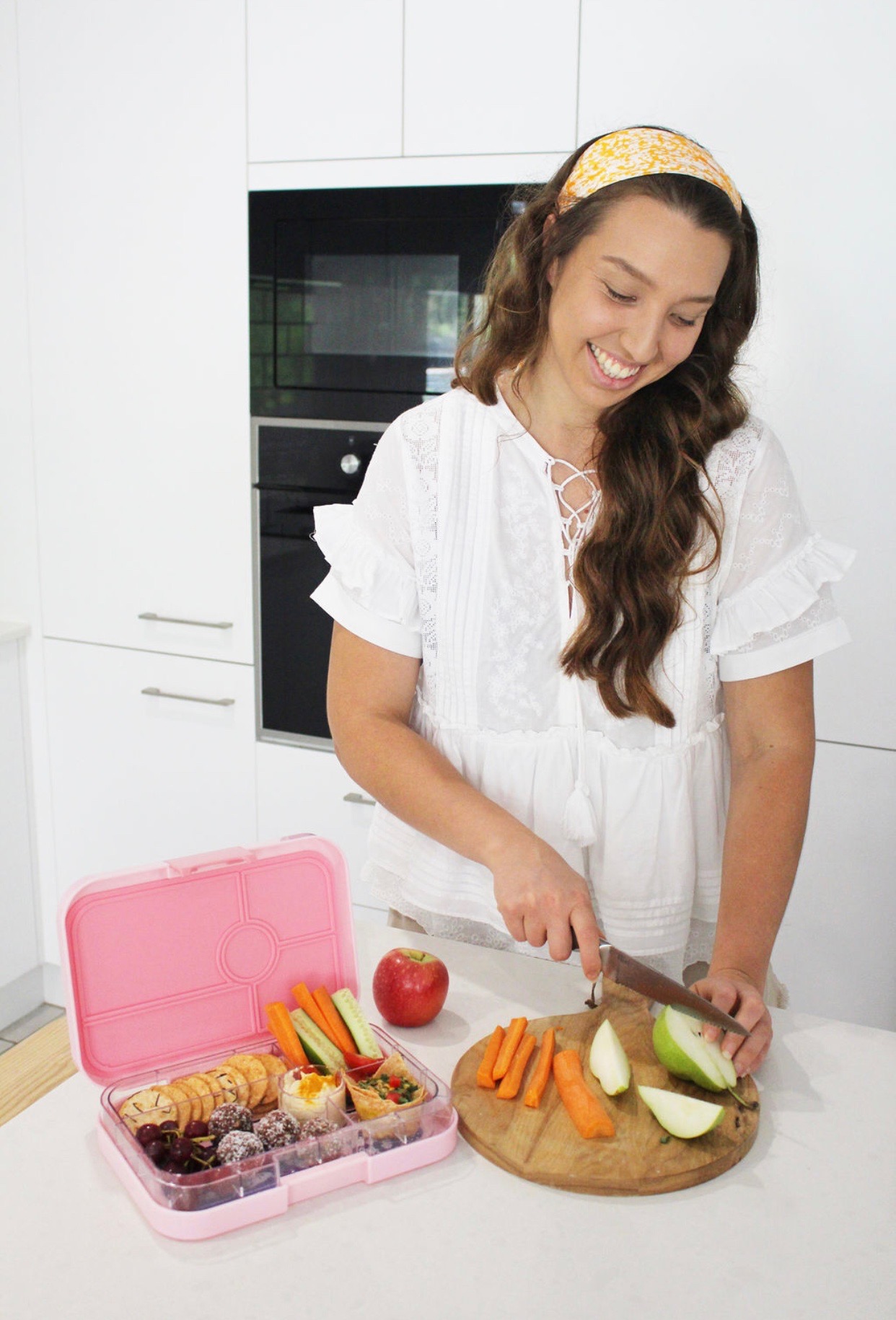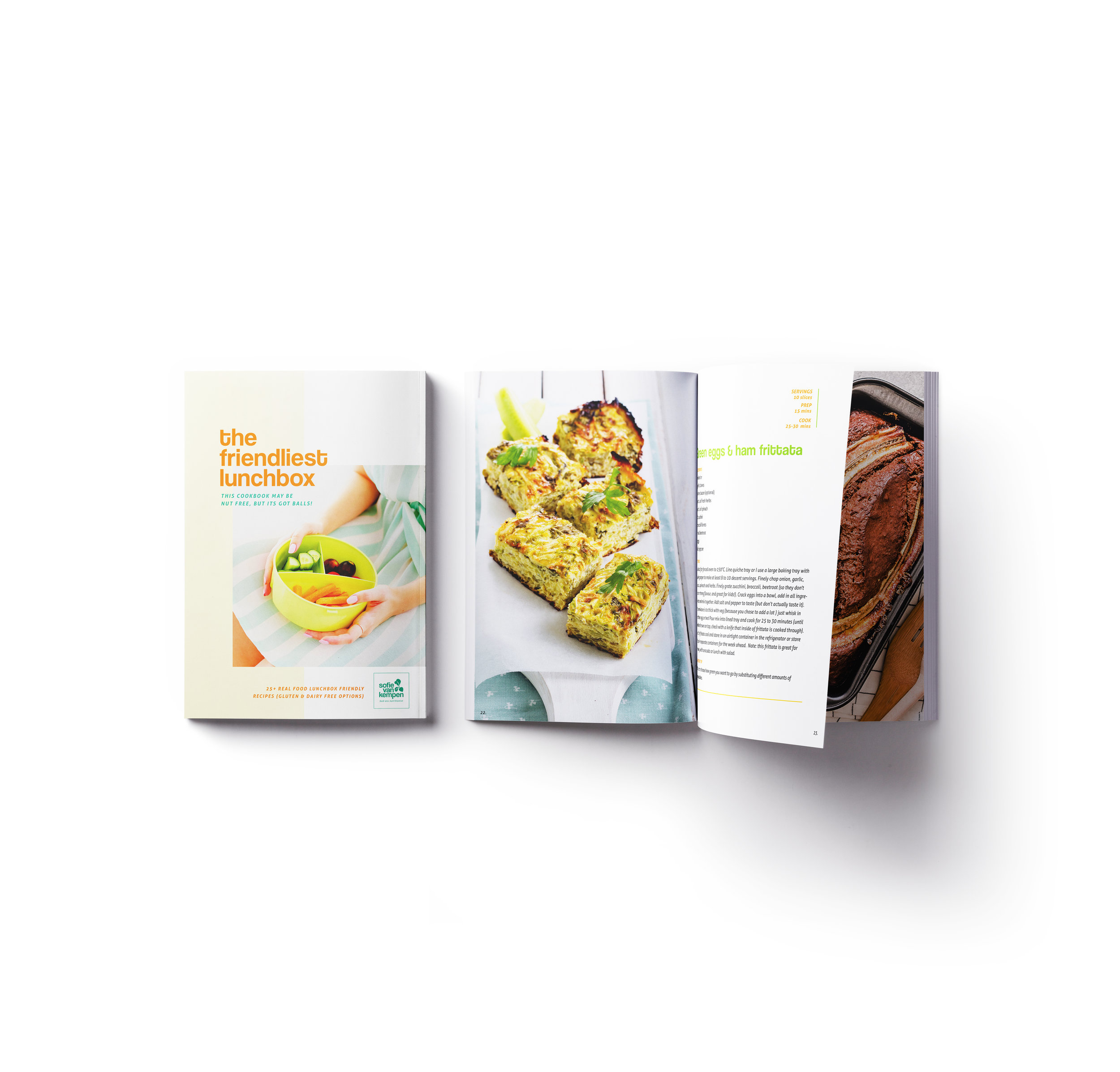7 Step Guide to Packing a Healthy, Balanced Lunchbox
Providing the right nutritious lunch box for yourself and your kids is important to fuel your day ahead. Whether it is active work, sitting at a desk, doing shift work, playing in the playground it all requires well balanced nutrition. There are key macronutrients that we need to feed our body for them to work optimally such as, proteins, fats and carbohydrates. Therefore it is important to have these incorporated into the lunchbox.
1. Incorporate Protein
Protein is an essential building block for our bones, muscles, skin, cartilage and blood. As protein is a macronutrient this means our body requires relatively large amounts of it throughout the day. Protein in your main meals and snacks keeps you feeling satiated and curbs sugar cravings.
Protein sources: organic free range chicken, grass fed meat, free range eggs and quality fish. There are also plant based sources of protein such as, legumes, tofu, tempeh, beans, nuts, seeds and chickpeas. If you are following a vegan or vegetarian diet it is important to food combine your plant based proteins together in order to create complete proteins. Examples of this are, nut butter on a wholegrain wrap, beans with brown rice or quinoa.
Mighty Meatballs from The Friendliest Lunchbox Recipe Book
Recipe ideas:
fried brown rice with seeds, veggies and eggs
roast chicken salad wrap
chicken wings (recipe in eBook)
tofu or egg brown rice sushi
veggie muffins (recipe in eBook)
veggie loaded meatballs (recipe in eBook)
chicken skewers
add nuts and seeds to bliss ball recipes
2. Incorporate Fats
Healthy dietary fats are essential to give your body energy, improve overall health, keep you feeling fuller for longer and support cell growth. Healthy fats assist us to absorb fat soluble vitamins such as vitamin A, D, K & E. This is important to note when using ingredients such as turmeric in a recipe as it is most efficiently absorbed by your body when good quality fats are present in the same meal.
Healthy fat sources: nuts (nut butters), tahini, extra virgin olive oil, seeds, coconut oil, avocado, oily fish (eg: salmon)
Bliss Balls from The Friendliest Lunchbox Recipe Book
Recipe ideas:
tahini bliss balls (recipe featured in eBook)
cranberry ripe coconut slice (recipe featured in eBook)
avocado or hummus on a wholemeal salad wrap or with brown rice crackers (veggie loaded dip recipes can be fund in the eBook)
boiled egg
muesli bars (nut free recipe in eBook)
veggie loaded, coconut/nut milk smoothies (recipe in eBook)
salmon fish cakes (recipe in eBook)
Note: as nuts are not permitted in some schools it is a good idea to make afternoon tea that incorporates these ingredients to give them those essential nutrients and healthy fats.
3. Incorporate Carbohydrates
Carbohydrates are our major energy source, helping to fuel our brain, kidneys, heart, muscles and central nervous system. When we think about carbohydrates we always think about bread, pasta, rice however carbohydrates are found in so many other food groups. The carbohydrates we want to focus on incorporating into our diet and children's diets are: vegetables, fruit and complex carbohydrates.
Chia Pots & Brekky Pots from The Friendliest Lunchbox Recipe Book
1. Complex Carbs that include: brown rice, basmati rice, sweet potato, potato, pumpkin, buckwheat pasta, quinoa, brown rice flours, oatmeal, rye, rice cakes, good quality wholemeal and wholegrain flours. Avoiding refined, processed, high sugar cakes and biscuits as an everyday food which usually contain preservatives, additives and food colourings.
2. Consume Fibrous Starchy Carbohydrates that are rich sources of vitamins, minerals, phytochemical and other nutrients - these tend to be your green vegetables. They are full of fibre that is essential to keeping the digestive tract process running smoothly, cleanly and healthy.
3. Simple Starchy Carbohydrates are sugar, honey, fruit, fruit juices, yoghurts and so on. These are a moderation carbohydrate due to the higher sugar content, however not all simple carbs are bad like 'refined white sugar.' Fruit and honey have essential vitamins, minerals and enzymes our bodies need to function optimally so it is important to consume them in moderation in our diet. The fibre in fruit assists in the slow release of sugars into your blood stream thus avoiding a sugar spike. Similarly with yoghurt, it is a naturally fermented/cultured food that provides our body with lots of beneficial good, healthy bacteria. If you can't consume dairy or lactose try coconut yoghurt as an alternative.
Recipe ideas:
Green Eggs & Ham frittata from The Friendliest Lunchbox Book
blender Brekky Loaf (recipe in eBook) includes fibrous vegetables & fruit
sweet potato chips with veggie loaded dips
carrot cake bircher (recipe in eBook)
wholemeal, buckwheat or sweet potato wrap
brown rice sushi
fritters or veggie slice with grated sweet potato & pumpkin (use our recipe in the eBook and add variations of veggies)
brown rice crackers with hummus and egg
wholemeal or brown rice flour muffins can be savoury or sweet
4. Lunchbox Serving Sizes (generalised)
It is important to have a balance of macronutrients throughout our day but what should we consider when packing ours or children's lunchboxes? Consider how active you are going to be, do you have an active job or do you plan to cycle to work or to school with the kids? Are you exercising in the morning or afternoon at the gym or are the kids playing sport? Make sure you cater for this as our appetites vary accordingly. We are all different sizes, have different activity levels and are very individual when it comes to food allergies/intolerances.
This is a generalised guide of average serving sizes that you can work around or discuss with your personal practitioners/GP.
Kids:
1/2 cup cooked pasta or 1 medium wrap
1 small fruit (orange, apple, pear, banana, etc) or 1/3 cup of (blueberries, strawberries, raspberries) - for a morning snack
1 medium baked potato or sweet potato - for a main meal
1 cup vegetables, chopped salad
20 grams of lean beef, poultry (deck of cards)
grilled or baked fish (check book size)
1 tbsp nut butter - on a piece of fruit for a snack
Adults:
1/2 cup to 1 cup of cooked grains for a main meal (depending on activity)
palm size portion of beef or poultry - for a main meal
1 medium/large piece of fruit (banana, orange, apple, etc) or 1/2 cup of (blueberries, strawberries, raspberries) - for a morning snack
1 tp 1 1/2 cups vegetables cooked or shredded in a salad for main meal
2 rice cakes for a snack with veggie dips and a boiled egg
Aim to include:
1 x Main lunch item - incorporating vegetables, protein, carbs, fats
1 - 2 Nutritious snacks such as a tahini bliss ball or rice crackers with veggie dips and a boiled egg or tuna
1 whole piece of fruit
5. Drink Water!
Water is vital and we as well as children need to keep hydrated. It is important to monitor how much water you drink throughout the day as well as how much water the kids drink. Fluids such as soft drinks, energy drinks, cordial all contain very high amounts of sugar and are processed usually with a lot of colourings, additives and preservatives that are certainly not necessary in our diets.
If you want to incorporate fluids other than water, consider: coconut water, kombucha, water or coconut kefir, all natural (no added sugar) fruit juices and if they are too concentrated try watering them down with coconut water or water. Bone broth is a great source of pure protein, as well as amino acids with great gut healing properties this a great drink during Winter, along with herbal teas.
Make water exciting for yourself or for children by using slices of fruit, lemons, limes, herbs such as mint.
Set an alarm to remind yourself to have a glass of water or a sip from your water bottle. Invest in a good quality water bottle which is BPA approved plastic, glass or stainless steel that is a decent size so you can track how much water you are drinking.
6. Keep it Interesting - Be Persistent!
We too can be fussy eaters just like children, so it is always important to keep it interesting. If I notice Tom is coming home with a lot of food in his lunch box which isn't being eaten I ask why ... Tom works some days in 40 degree heat maybe he doesn't feel like drinking bone broth in his insulated flask no matter how good it is for him or maybe he doesn't want to eat chicken and roast veggies. He probably would prefer fruit, coconut yoghurt, muesli, salad and a smoothie made on coconut water to help his hydration.
When preparing food not only for yourself but others, it is important to:
Make them a part of their own lunch and food prep. Especially if children contribute to making the food they are more enticed to eat it.
Provide variety in main meals and snacks - eating seasonal is a great way to naturally do this.
Don't over complicate it! Just keep it simple and have a general guideline.
Avoid making food that is fiddly or complicated to eat especially for children.
Have a good balance of savoury and sweet foods with lots of flavour using real ingredients. Ideally more savoury than sweet.
7. Plan Ahead
Prep a lot of your food ahead of time possibly on a Sunday or whatever day fits into your schedule best.
Freeze bliss balls, slices, muesli bars and bring them out of the freezer as required instead of making lunches every night or morning of.
Take leftovers for lunch so you aren't always cooking and cleaning for separate meals.
Pre make breakfasts such as overnight oats or brekky frittata so there is always something to snack on or have on the go.
Write a shopping list, plan ahead and organise your kitchen so you know and are prepared for what you are making.
Have a good lunch box or bento box, containers, water bottle, freezer bags, reusable cutlery etc.
I hope you have found this blog to be beneficial in helping you to prepare a tastier, healthier and more efficient lunchbox.
Sofie
Real Food Lunchbox Workshops & Recipe Book
25+ real food lunchbox friendly recipes (gluten free, dairy free and nut free options)
Shan and Sofie are here to show you how to fuel and nourish the big and little bodies in your life with these affordable, delicious and waste free lunch box recipes! Focusing on reducing packaged and processed food whilst increasing vegetables into their diet the easiest and most delicious way possible.








